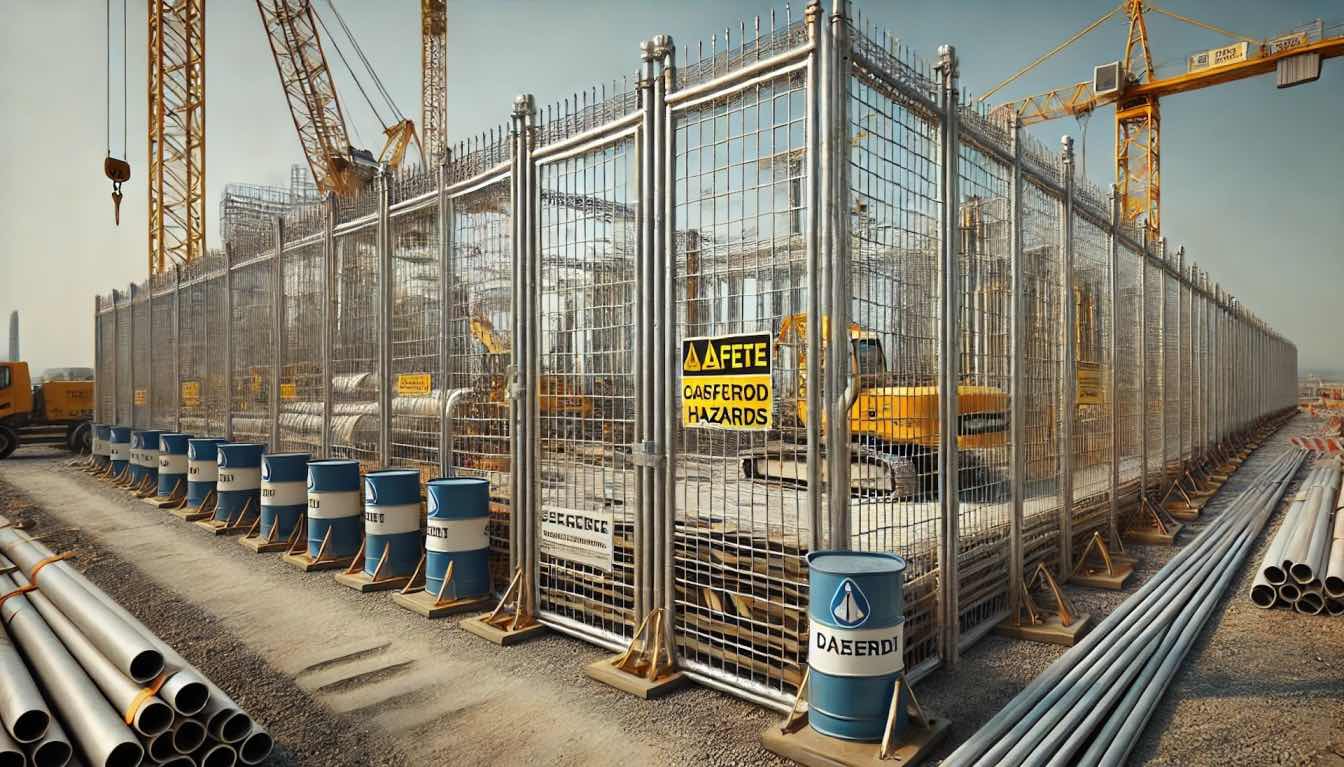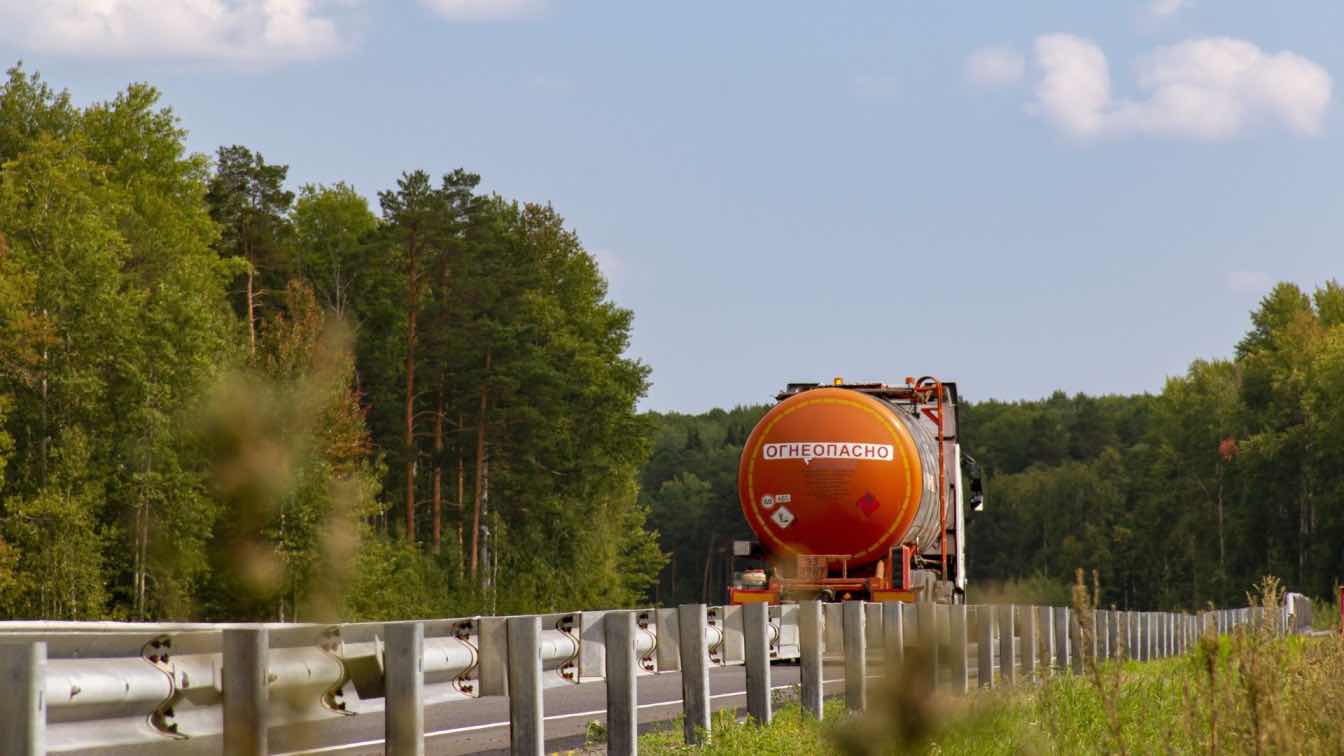Construction site compliance is a critical aspect of any successful project, ensuring the safety of workers, the public, and the integrity of the site itself.
Temporary fencing serves as a crucial element in achieving and maintaining compliance, acting as a key tool for mitigating risks, safeguarding assets, and adhering to regulatory requirements.
Discover the vital role of temporary fencing in construction site compliance, where we explore its advantages and effective strategies for implementation.
The Essentials Of Temporary Fencing In Construction
Temporary fencing is a crucial component of construction site setup, serving multiple purposes that contribute to overall compliance. Exploring the key aspects of temporary fencing and its role in the construction industry can provide valuable insights.
Temporary fencing serves as an essential component in the construction landscape, offering a range of benefits that can contribute to the success of projects.
What Is Temporary Fencing And Its Purpose
Temporary fencing refers to the installation of portable, removable barriers around a construction site's perimeter. Its primary purpose is to establish a clear boundary, restricting unauthorized access and creating a controlled environment for construction activities.
By defining the site's limits, temporary fencing helps maintain safety, security, and order throughout the project's duration.
Key Components Of Construction Site Compliance
Construction site compliance encompasses a wide range of factors, including safety regulations, environmental standards, and local building codes. Temporary fencing plays a significant role in addressing these components by:
- Preventing unauthorized entry and potential accidents
- Protecting workers, equipment, and materials
- Controlling site access and managing traffic flow
- Ensuring compliance with height and visibility requirements Implementing dust and noise controlmeasures
How Temporary Fencing Supports Compliance
Temporary fencing acts as a physical barrier, clearly demarcating the construction site and restricting access to authorized personnel only.
By controlling entry points and limiting exposure to potential hazards, temporary fencing helps maintain a safe working environment. It also supports compliance with regulations governing site security, pedestrian and traffic management, and environmental control measures.
Types Of Temporary Fencing For Construction Sites
Several types of temporary fencing are commonly used in construction sites, each with its own advantages and applications: Chain-link fencing: Durable and versatile, chain-link fencing provides excellent visibility and security.
Welded wire mesh panels: Sturdy and easy to install, these panels offer a cost-effective solution for site demarcation. Crowd control barriers: Lightweight and portable, crowd control barriers are ideal for managing pedestrian traffic and creating temporary walkways.
Choosing The Right Temporary Fencing Provider
Selecting the right temporary fencing provider is crucial for ensuring compliance and achieving project success. When evaluating potential providers, consider factors such as experience, product quality, installation capabilities, and customer support.
Reputable providers like Blain Stumpf offer a wide range of temporary fencing solutionsdesigned to meet the specific needs of construction sites, ensuring optimal safety and compliance.
Safety And Security Benefits Of Temporary Fencing
Temporary fencing serves an important purpose in ensuring safety and security on construction sites. By implementing effective fencing solutions, contractors can protect workers, the public, and valuable assets from potential risks and liabilities.
Protecting Workers And The Public
Construction sites can present various hazards, including falling objects, open excavations, and heavy machinery. These factors require careful attention and appropriate safety measures to protect workers and visitors.
By implementing robust safety protocols, construction companies can mitigate these risks and ensure a secure work environment.
Temporary fencing creates a physical barrier that prevents unauthorized individuals from entering hazardous areas, reducing the risk of accidents and injuries. By controlling access points and clearly defining site boundaries, temporary fencing helps ensure the safety of both workers and the general public.
Securing Equipment And Materials
Construction sites often house valuable equipment, tools, and materials that are vulnerable to theft and vandalism. Temporary fencing acts as a deterrent, making it more difficult for criminals to access the site and steal or damage assets.
By securing the perimeter and limiting entry points, temporary fencing helps safeguard investments and minimize financial losses.
Controlling Site Access
Effective site access control is essential for maintaining safety and security. Temporary fencing allows contractors to manage who enters and exits the construction site, ensuring that only authorized personnel are present.
By implementing designated entry points and security measures, such as gates and ID checks, temporary fencing helps enforce access control policies and maintain a secure environment.
Mitigating Liability Risks
Construction companies face significant liability risks when accidents or incidents occur on their sites. Temporary fencing plays a crucial role in mitigating these risks by demonstrating a proactive approach to safety and security.
By implementing appropriate fencing solutions and adhering to regulatory requirements, contractors can reduce the likelihood of accidents and minimize their exposure to potential legal claims.
Regulatory Landscape And Temporary Fencing
Ensuring compliance at construction sites is a critical aspect of business operations. Temporary fencing must adhere to various standards and requirements to ensure the safety and well-being of workers and the public.
Common Regulations Governing Construction Site Fencing
Construction site fencing is subject to a range of regulations at the federal, state, and local levels. These regulations may include:
- Occupational Safety and Health Administration (OSHA) standards
- Building codes and zoning regulations
- Environmental protection laws
- Americans with Disabilities Act (ADA) requirements
It is essential for contractors to familiarize themselves with the specific regulations applicable to their projects and ensure that temporary fencing solutions comply with these standards. Completing an osha 10 certification can help contractors and site supervisors better understand and implement these regulatory requirements on-site.
Height And Visibility Requirements
Many regulations specify minimum height and visibility requirements for construction site fencing. For example,OSHA requires that temporary fencing be at least 6 feet high to prevent unauthorized access. Fencing must be clearly visible, often requiring the use of high-visibility materials or signage to alert individuals to the presence of the barrier.
Installation And Maintenance Standards
Proper installation and maintenance of temporary fencing are critical for ensuring compliance and effectiveness. Regulations may dictate specific installation methods, such as anchoring requirements or the use of certain materials.
Regular inspections and maintenance are also necessary to identify and address any damage or weaknesses in the fencing system.
Penalties For Non-Compliance
Failure to comply with temporary fencing regulations can result in significant penalties for construction companies.
These may include fines, work stoppages, and legal liabilities. Non-compliance can also damage a company's reputation and hinder its ability to secure future projects. Therefore, it is crucial to prioritize compliance and work with reputable fencing providers to ensure adherence to all relevant regulations.
Maximizing The Effectiveness Of Temporary Fencing
To fully maximize the benefits of temporary fencing for construction site compliance, it is essential to follow best practices for installation, maintenance, and adaptation to site changes.
Best Practices For Installation
Proper installation is key to ensuring the effectiveness and durability of temporary fencing. Best practices include:
- Selecting the appropriate fencing type based on site-specific requirements
- Ensuring adequate anchoring and stability to withstand weather conditions and potential impacts
- Maintaining proper spacing between fence posts and panels
- Installing gates and access points in strategic locations for controlled entry and exit
Maintenance And Regular Inspections
Regular maintenance and inspections are crucial for identifying and addressing any issues with temporary fencing. Contractors should establish a schedule for routine checks, looking for signs of damage, wear, or instability.
Promptly repairing or replacing compromised fencing components helps maintain the integrity of the barrier and ensures ongoing compliance.
Adapting Fencing To Site Changes
Construction sites are constantly changing environments, with evolving needs and challenges throughout the project lifecycle. Temporary fencing solutions must be adaptable to accommodate these changes.
This may involve relocating or reconfiguring fencing as work progresses, adding or removing access points, or adjusting the layout to accommodate new site requirements.
Integrating With Other Safety Measures
Temporary fencing is most effective when integrated with other safety measures on the construction site. This may include:
- Signage and warnings to alert individuals to potential hazards
- Lighting and visibility enhancements for low-light conditions
- Traffic control devices and pedestrian walkways
- Personal protective equipment (PPE) for workers
By combining temporary fencing with a thoughtful safety strategy, contractors can create a robust and compliantwork environment that prioritizes the well-being of all stakeholders.
Frequently Asked Questions
- How does temporary fencing contribute to dust and noise control?
Temporary fencing can be equipped with specialized materials, such as wind screens or sound-absorbing panels, to help contain dust and reduce noise levels emanating from the construction site.
By creating a physical barrier, fencing helps minimize the impact of construction activities on surrounding areas, contributing to environmental compliance.
- Can temporary fencing be customized for specific construction site needs?
Yes, temporary fencing solutions can be customized to address the specific needs of individual construction sites. Providers offer a range of options, including different heights, materials, and configurations, to address specific safety, security, and compliance needs.
- What are the cost considerations for implementing temporary fencing?
The cost of temporary fencing depends on factors such as the size of the site, the type of fencing selected, and the duration of the project.
While there is an initial investment, the benefits of enhanced safety, security, and compliance often outweigh the costs. Contractors should work with fencing providers to develop cost-effective solutions that meet their budgetary constraints.
- How quickly can temporary fencing be installed or removed?
Temporary fencing is designed for rapid installation and removal, minimizing disruption to construction timelines.
Experienced providers can typically install fencing within a matter of days, depending on the size and complexity of the site. Removal is equally efficient, allowing contractors to quickly adapt to changing site conditions or project requirements.
- Are there eco-friendly options for temporary construction fencing?
Yes, there are eco-friendly alternatives available for temporary construction fencing. Some providers offer fencing solutions made from recycled or sustainable materials, such as recycled plastic or bamboo.
These options help reduce the environmental impact of construction activities while still providing effective safety and security measures.
Conclusion
Temporary fencing is an essential component of construction site compliance, playing a crucial role in ensuring the safety, security, and regulatory adherence of projects. By implementing appropriate fencing solutions, contractors can protect workers, the public, and valuable assets, while mitigating risks and liabilities.
Effective temporary fencing requires careful consideration of site-specific needs, regulatory requirements, and best practices for installation and maintenance.
By collaborating with reliable fencing suppliers and incorporating fencing into a well-designed safety plan, construction companies can establish a compliant and secure environment that supports successful project results.
Investing in temporary fencing is not just a matter of compliance; it is a commitment to the well-being of all stakeholders involved in the construction process. By prioritizing safety and security through the strategic use of temporary fencing, contractors can build a foundation of trust and reliability that sets them apart in the industry.





